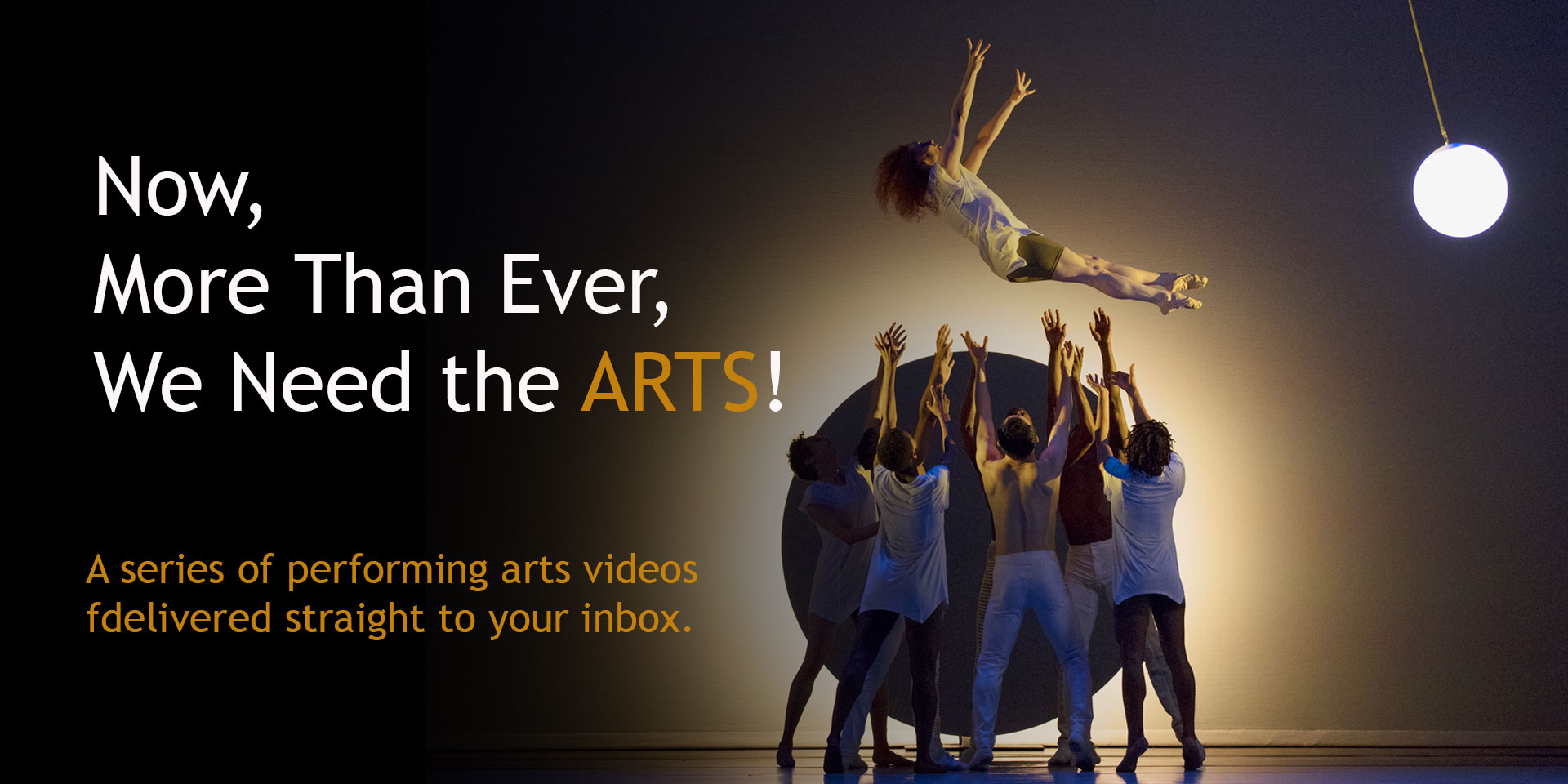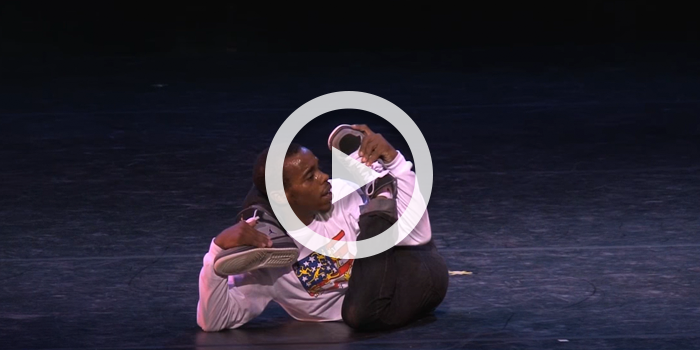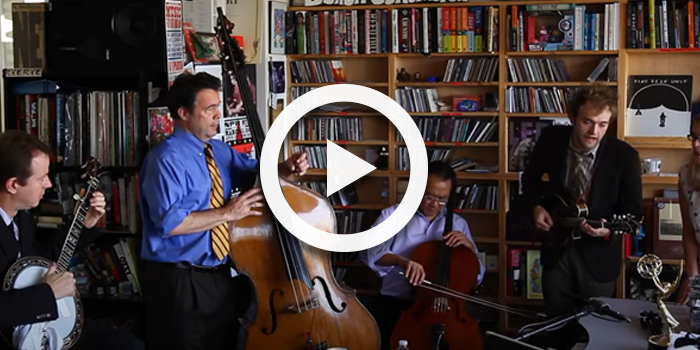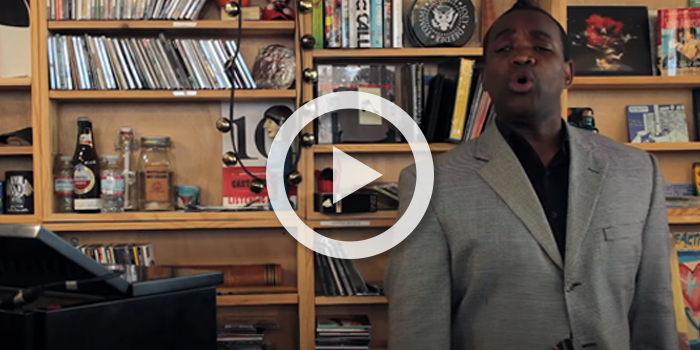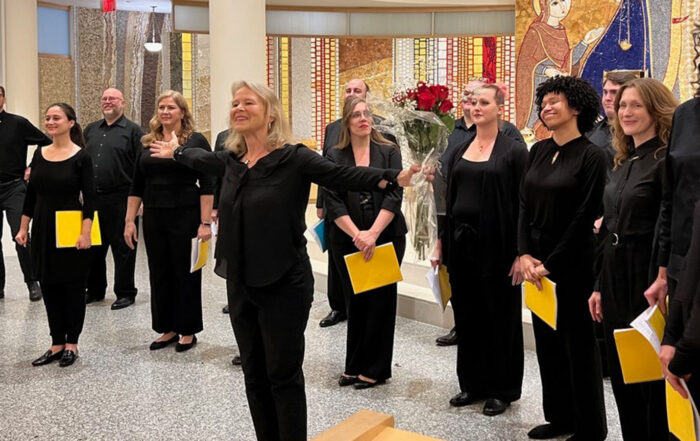In this issue: Berlioz’s Dies irae and Tuba mirum from Requiem, Op. 5 conducted by Sir Colin Davis; vocalist Sarah Vaughan performing “Once in a While”; Nicolas Krassik & Cordestinos and Friends, featuring Gilberto Gil performing “Casamento da Raposa”; Alvin Ailey American Dance Theater performing Rennie Harris’ Lazarus; violinist David Oistrakh and cellist Mstislav Rostropovich performing Brahm’s Vivace non troppo from Double Concerto in A minor
Now, More Than Ever: Issue 23
Berlioz: Dies irae and Tuba mirum from Requiem, Op. 5
(If this video doesn’t begin at 25:00, please reset it; the music I’m calling to your attention today starts there and ends at roughly 38:00. But if you have the time, I recommend watching the entire performance; you would be hard pressed to find a more committed and persuasive account of this grand and glorious work.)
We begin and end today at London’s renowned Royal Albert Hall, with performances separated by nearly 40 years.
I was fortunate enough to work with Sir Colin Davis for a number of years at the New York Philharmonic. At first, I felt terribly intimidated in the presence of this august figure, but happily, I soon discovered—somewhat hidden behind a restrained British exterior—one of the most open, generous, and truly humble artists I’ve ever encountered. (Once, in a rehearsal of Sibelius’ Symphony No. 7, he put his baton down, and said, “I am too small for this piece.”) Davis came from very modest beginnings and worked his way up—as he would say, through his “Holy Terror phase”!—to reach a pinnacle of fame and accomplishment that few come to know in their lifetimes. It may seem trite, but the most honest thing I can say about him is that he truly loved music, especially sharing it with young people (as he does here).
Berlioz conceived his Requiem as a sprawling work to be performed by an absolutely immense assembly of musicians. It’s almost impossible to imagine a church large enough to hold it, and even the cavernous Royal Albert Hall appears over-stuffed with musical forces. (Originally designed with a capacity for 8,000 people, the hall has accommodated as many as 12,000. Today’s safety regulations restrict capacity to around 5,250.) Surely this was a composer who refused to allow economic realities to confine his imagination, and for this piece—the only commission he received from the French government—he really let go. As you’ll see, there are four brass bands and 16 timpani, all contributing to an enormous sound.
What impresses me most about this video is seeing Davis’ joy—again, that overwhelming love of music—combined with an approach that’s both mature and serene. Of all the Requiems out there, this is perhaps the least religious, but it is truly dramatic. This video only gives us a taste, but one can imagine how it thundered through the Royal Albert Hall as part of the 2000 Proms season.
The YouTube page lists four choruses and two orchestras among the participants, many of whom are students. I can only imagine the life-changing sense of joy experienced by these young people, performing such a work under the acknowledged preeminent Berlioz interpreter of his time, in such a famous venue.
“Once in a While”
Sarah Vaughan, vocalist and pianist
Among other things, this charming video leaves me with one tantalizing question: What would Sarah Vaughan have been like as a classical pianist? Her short excursion into Rachmaninoff’s Prelude in C-sharp minor (Op. 3, No. 2) is enough to set the mind spinning.
This performance, clearly an encore, displays a warmth of personality that positively leaps across the footlights—her witty exchanges with the audience, her humor, her angelic singing over what sounds like four octaves. And then, that unforgettable moment when she actually teases her audience into applauding and finally letting her go home. There is no doubt as to who’s in control here.
You find yourself asking, “Really, is there anything she can’t do?”
“Casamento da Raposa”
Nicolas Krassik & Cordestinos and Friends
(featuring Gilberto Gil)
I was actually at this concert in Rio, in June 2011, while I was involved in a research project for Carnegie Hall. I had been working with the great Gilberto Gil and he invited me to attend this performance as his guest. It was supposed to start at 10pm but actually got underway around 11:15pm. Gil only walked onto the stage sometime after 2am and we closed out the festivities near 3:30–4am. Even though I was younger then, it was an endurance event that tested my reserves (joyful and memorable as it was!).
I’ll never forget this particular jam session as violinist Nicolas Krassik and his band Cordestinos combined forces with a host of guest artists for a performance of their greatest hit, the title of which translates as “The Fox’s Wedding.” Krassik is French by birth but made his career in Brazil, playing violin in lots of pop music, but more importantly—and as we see here—on the rabeca, an ancestor/relative of the violin that has lived on in Portuguese folk music (and, in even wider distribution, as part of the Brazilian forró tradition). It’s wonderful that the band takes the time for memorable solo work by each of its virtuoso members. (Can you believe Hamilton de Holanda on mandolin?!)
What links this performance with the (earlier) clip of the Berlioz and the Brahms (coming up) is the insistent rhythm that forms the basis for the whole work. When a phrase or rhythm like this lasts for a long stretch (or the entirety) of a piece, it’s called an “ostinato” (from the same root that gives us the word “obstinate”) and it provides the foundation above which improvised or spontaneous-sounding passages can really take off.
All in all, a truly joyous affair, and I’m delighted it was captured for posterity, if only to view it for myself when I’m more awake!
Lazarus
Rennie Harris, choreographer
Alvin Ailey American Dance Theater
Please note, this video will be available on YouTube until 3:30pm (Pacific Time), Thursday, July 9.
Especially in light of recent events that have challenged—and continue to test—our nation, I’m pleased to share with you a full-length video of the Alvin Ailey American Dance Theater in Rennie Harris’ electrifying Lazarus, a Cal Performances co-commission that received its Bay Area premiere in 2019, and was scheduled for a reprise Zellerbach Hall performance last April (canceled due to the current coronavirus pandemic).
In this, the company’s first two-act ballet, acclaimed hip-hop choreographer Harris completes a trilogy of works—including past Ailey audience favorites Exodus and Home—with an hour-long piece inspired by the life and times of Alvin Ailey himself. With Lazarus, Harris connects past and present in a powerful work that addresses the racial inequities America faced when Ailey founded this company in 1958 and still faces today.
Reviewing the work, the New York Times said, “The choreography is based on the Philadelphia style called GQ: rhythmically intricate footwork with a laconic upper body; off-kilter steps as if on a rolling surface; jumps that twist loosely in the air. The cool confidence of the style has a spiritual force that’s uplifting, and the pleasure of it is mixed with a revelation of the past in the present, of black history in the body language. Lazarus brings Ailey back to life by showing why he still matters to a living artist of Mr. Harris’s caliber.”
Brahms: Vivace non troppo from Double Concerto in
A minor, Op. 102
David Oistrakh, violin
Mstislav Rostropovich, cello
Kirill Kondrashin, conductor
Moscow Philharmonic Orchestra
(If this video doesn’t begin at 24:41, please reset it.)
I have a great love for a different recording with Oistrakh and Rostropovich playing the Brahms Double Concerto, but I was absolutely thrilled to discover this one—a dazzling and deeply felt performance of this undisputed masterpiece, the composer’s final orchestral work. Here we’ve linked to the last movement, but if you have time, do yourself a favor and sit back for the entire ride.
When I was in music school, the artist I most wanted to sound like was David Oistrakh. The generosity of his sound. The sincerity of his interpretations. His profound humanity. And although there was always plenty of virtuosity to spare, that aspect of his playing never came off as inappropriate or self-indulgent. First and foremost, Oistrakh served the music.
Don’t let the expressions on his face fool you. There’s a lot of humor here in this last movement and Oistrakh is having a wonderful time, lots of gentle fun. I think Rostropovich’s performance has a bit more bite, and perhaps he even has another agenda; he’s actually something of a tease here. (As a great teacher once said about this magisterial Russian cellist, “We love him, but we should never try to do what he does.”) That’s the thing about concertos with multiple soloists; it’s the subtle differences—and the ways the performers play off each other—that keep you engaged.
A closing note: Brahms had firm opinions about the composers of his time, and some of his most damning criticism is of Berlioz, whose works he admired but of whom he said, “He is a genius without talent.” I think Brahms saw Berlioz’s attempts at spectacle as empty. Perhaps he didn’t recognize Berlioz’s sincerity because it presented itself so differently than his own.
Now, More Than Ever Full Playlist
Now, More Than Ever Spotify Playlist


